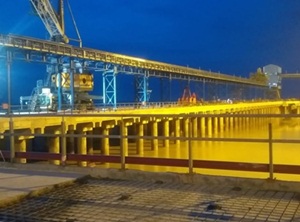Prime Minister Narendra Modi will dedicate to the nation the second riverine multi-modal terminal built at Sahibganj in Jharkhand on Thursday, 12 September. The PM will inaugurate the state-of-the-art terminal through a two-way digital communication system at an event in Ranchi, Jharkhand.

Built at a cost of Rs290 crore, the Sahibganj terminal is the second of three multi-modal terminals being constructed on river Ganga under Jal Marg Vikas Project (JMVP).
The multi-modal terminal at Sahibganj will open up industries of Jharkhand and Bihar to the global market and provide Indo-Nepal cargo connectivity through waterways route. It will play an important role in transportation of domestic coal from the local mines in Rajmahal area to various thermal power plants located along NW-1. Commodities other than coal, stone chips, fertilisers, cement and sugar are also expected to be transported through the terminal.
The multi-modal terminal will also help to create direct employment of about 600 people and indirect employment of about 3,000 people in the region. The convergence of road-rail-river transport at Sahibganj through the new multi-modal terminal will connect this part of the hinterland to Kolkata, Haldia and further to the Bay of Bengal. Also, Sahibganj will get connected to North-East states through Bangladesh by river-sea route.
The terminal will have a capacity of 3 million tonnes per annum, which will be raised to 5.48 million tonnes per annum with an investment of Rs376 crore for capacity enhancement in Phase II under PPP mode. The development in Phase II will be entirely made by the private concessionaire. Further, a freight village is also proposed on 335 acres of land in contiguity with the terminal.
The multi-modal terminals being built as part of the Jal Marg Vikas Project that aims to develop the stretch of River Ganga between Varanasi and Haldia for navigation of large vessels up to 1,500-2,000 tonnes dwt, by maintaining a drought of 2-3 metres in this stretch of the river and setting up other systems required for safe navigation. The objective is to promote inland waterways as a cheaper and more environment friendly means of transport, especially for cargo movement.































